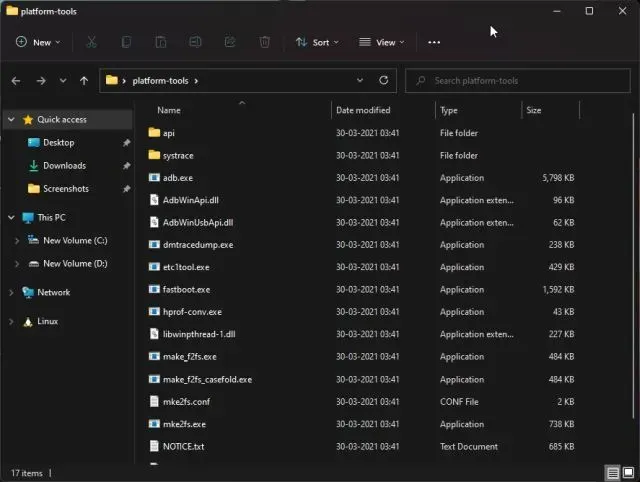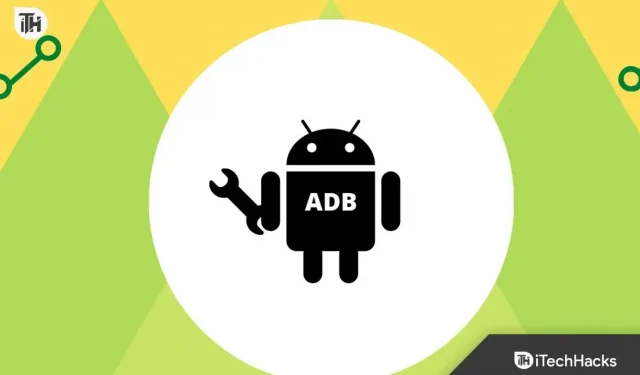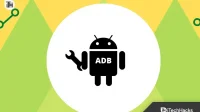The features and settings of Android are one of the key factors behind its popularity and wide range of users around the world. Transferring or copying files from/to Android devices can be very useful in several scenarios compared to MTP/file transfer. Luckily, you can easily copy a file from your computer to your Android device using ADB Push.
The ADB Push and ADB Pull commands are really helpful in transferring files between your Windows/Mac system and Android device. Generally, copying or transferring files can take longer and can be a bit of a hassle in the traditional way from PC to Android or vice versa.
But with the ADB Push command method, you can easily transfer or copy large files and files with various extensions in a couple of clicks and taps. It includes video and image files, documents, PDFs, archive files, PSD files and more, regardless of Windows and Mac. Here we have provided you a detailed step-by-step guide to transfer files to Android from Windows/Mac computer using ADB Push commands.
What is ADB and its features?
ADB stands for Android Debug Bridge, a common but useful command line tool included with the Android SDK Platform-Tools. It is mainly used to connect or link your Android device with another device like Windows, Mac or Linux. Most Android developers and avid fans of Android customization prefer to use ADB and Fastboot commands on their Android devices to perform certain tasks.
Over the past couple of years, even regular Android users have also started to get into it, as USB debugging, unlocking the bootloader, or rooting has become a trend. If you are having problems copying or transferring files via traditional MTP mode from computer to Android phone, you should use ADB Push. While the MTP/File Transfer feature works fine, some users may experience connection or transfer issues across multiple Android devices.
So, if you urgently need to copy files to your Android smartphone/tablet, ADB Push comes into play. Talking about the benefits or features of ADB and Fastboot commands, you will be able to perform certain tasks on your Android phone such as transferring files, flashing firmware files, flashing custom recovery, installing or removing apps, unlocking or locking the bootloader, booting the system into stock recovery, debugging software/hardware on your device, system firmware update, etc.
What are the requirements?
Before moving on to the ADB Push method on your Android device, you will need some files installed on your phone and computer. Make sure everything is ready by following the instructions below.
- You will need a Windows, Mac or Linux computer.
- USB cable to connect PC and Android device.
- If it is not installed, you will have to install the Android USB driver on your computer. Just run the installer and follow the on-screen instructions to complete the installation.
- Download the Android SDK platform tools (ADB and Fastboot) on your computer.
- Keep your Android device sufficiently charged (more than 40%).
- Enable USB debugging on your Android phone. For this:
- Open the Settings app on your phone.
- Go to the “About phone”section .
- Click on the build number 7 times in a row to get a successful “You are now a developer”message. This means that you have enabled developer mode on your device.
- Now go back to the Settings menu again and click on Developer Options .
- Don’t forget to turn on the “Developer options”toggle at the top.
- Then turn on the USB Debugging switch . When prompted, select “Allow USB Debugging”and click OK.
Steps to Copy File from Computer to Android with ADB Push
You are now ready to begin the process of copying or transferring files to your Android device via computer using ADB commands. So, without further ado, let’s get started.
- First of all, properly connect your Android device to your computer with a USB cable.
- We assume that you have already installed the Android USB driver on your system. If not, do it now. [Important]
- Apparently you also enabled USB debugging. If not, do it.
- Next, you need to extract the downloaded ADB and Fastboot tools on your computer to a suitable location, such as your desktop screen or any folder/drive.
- Open the extracted Android SDK Platform Tools (ADB and Fastboot Tools) folder.
For Windows:
- Press and hold the Shift key + right-click on an empty space inside the folder.

- A context menu will open and you will need to select “Open PowerShell Window”here. (On some PCs this will look like Open command window here)
- When prompted, click Yes to open a command window.
- Now you need to type the following ADB command and press Enter to complete the file transfer:
adb push <локальный файл> <удаленное расположение>
- Wait for the transfer to complete and the status will be shown in the command line window.
- Finally, you can unplug the USB cable from your phone.
Note: Here, <local file> is the full path to the file on the PC. (For example, C:\User\Filename.extension) and <remote location> is the full path to the Android location. (For example, /root/filename.extension/ or /sdcard/filename.extension/)
For Mac/Linux:
- If you are using a Mac or Linux computer, just launch the Terminal.
- Be sure to change the directory to the SDK Platform Tools folder by running the cd command below to set up ADB and Fastboot: (e.g. Documents/platform-tools/)
cd Документы/платформенные инструменты
- Now you need to type the following ADB command and press Enter to complete the file transfer: [Be sure to add <local file> and <remote location> as above]
adb push <локальный файл> <удаленное расположение>
- Wait for the transfer to complete and the status will be shown in the command line window.
- Finally, you can unplug the USB cable from your phone.
So, you have successfully copied or transferred the necessary files to your Android device using the ADB Push method. We hope this guide has helped you.


